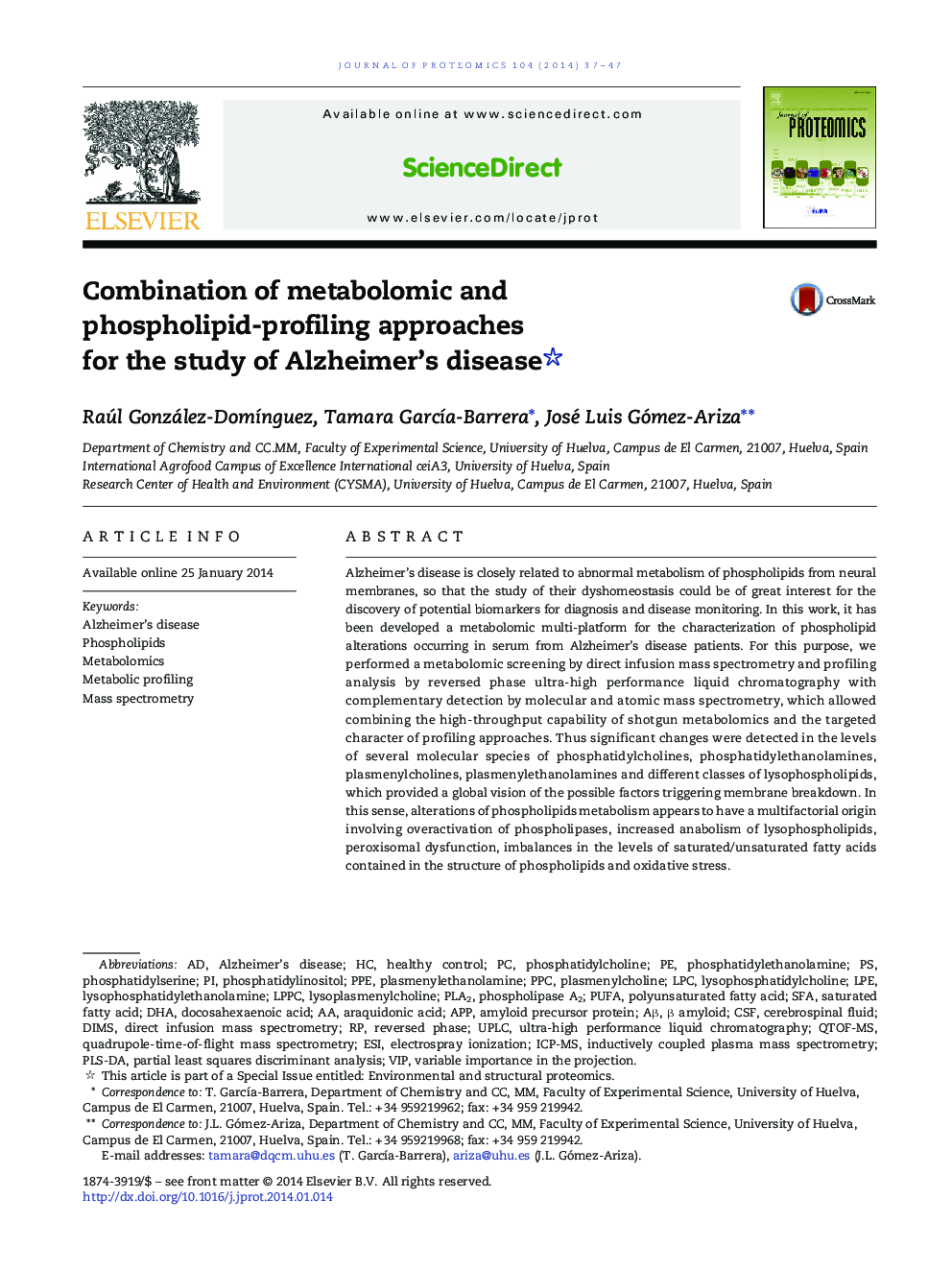| Article ID | Journal | Published Year | Pages | File Type |
|---|---|---|---|---|
| 1225176 | Journal of Proteomics | 2014 | 11 Pages |
•Combined metabolomic-profiling approach allows broader study of phospholipids.•Different phospholipid species are altered in Alzheimer's disease.•Alterations depend on the phospholipid class and fatty acid composition.•Abnormal phospholipid metabolism in Alzheimer has a multifactorial origin.
Alzheimer's disease is closely related to abnormal metabolism of phospholipids from neural membranes, so that the study of their dyshomeostasis could be of great interest for the discovery of potential biomarkers for diagnosis and disease monitoring. In this work, it has been developed a metabolomic multi-platform for the characterization of phospholipid alterations occurring in serum from Alzheimer's disease patients. For this purpose, we performed a metabolomic screening by direct infusion mass spectrometry and profiling analysis by reversed phase ultra-high performance liquid chromatography with complementary detection by molecular and atomic mass spectrometry, which allowed combining the high-throughput capability of shotgun metabolomics and the targeted character of profiling approaches. Thus significant changes were detected in the levels of several molecular species of phosphatidylcholines, phosphatidylethanolamines, plasmenylcholines, plasmenylethanolamines and different classes of lysophospholipids, which provided a global vision of the possible factors triggering membrane breakdown. In this sense, alterations of phospholipids metabolism appears to have a multifactorial origin involving overactivation of phospholipases, increased anabolism of lysophospholipids, peroxisomal dysfunction, imbalances in the levels of saturated/unsaturated fatty acids contained in the structure of phospholipids and oxidative stress.Biological significanceThis work represents the first comprehensive characterization of serum phospholipids alterations in relation to Alzheimer's disease, by combining shotgun metabolomics and phospholipids profiling through different analytical approaches.This article is part of a Special Issue entitled: Environmental and structural proteomics.
Graphical abstractFigure optionsDownload full-size imageDownload high-quality image (62 K)Download as PowerPoint slide
